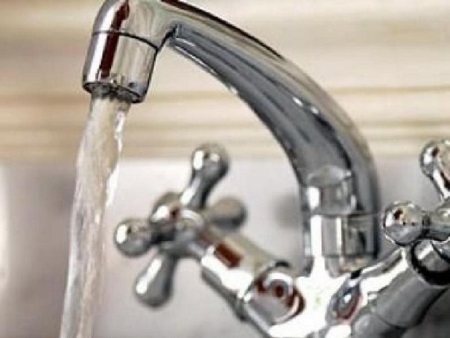Aerator for the faucet
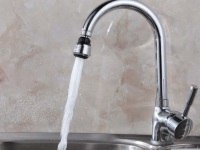
Today we will talk about aerators, which are installed on faucets in the bathroom, kitchen. We will talk about their advantages, disadvantages, the realities of saving water with these devices. Plus, we will share the nuances of cleaning, replacement of the device.
Pros
The positive aspects of the aerator include:
- Affordable price, which does not require significant costs for their installation and replacement. Depending on the model and its design features, the price ranges from $2 to $10;
- Noise reduction. Water falling into the sink bowl contributes to the reduction of sounds;
- Simplicity of design. Even a beginner can understand it. A simple housewife can easily install and dismantle the aerator by herself;
- It additionally serves as a coarse filter for water, trapping large fractions of dirt and debris, which are more than enough in our water system.
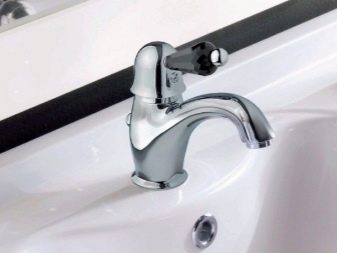

Disadvantages
As for the disadvantages, here you will not see an extensive list. In fact, the aerator has only one disadvantage - short-lived.
This is due to the fact that there is a lot of dirt in the water, which clogs the device, bringing it into disrepair. If you live in a house with old pipes, covered with rust, the replacement will have to be done once a year, or better - twice. At this price of an aerator, it shouldn't be a problem.
What is it for?
The main function of the aerator is to reduce fluid flow. However, this is not the only task that such a small device can perform.
- It helps to improve the quality of the jet. If you remove the aerator and turn on the water, you will see how haphazardly it will flow. Splashing all over the sink and not only you are guaranteed. The aerator makes the water flow smoothly.
- It oxygenates the water. This has an important advantage - we get rid of chlorine, which is hazardous and harmful to human health.
- Large particles of dirt and debris are eliminated. It allows you to use cleaner water.
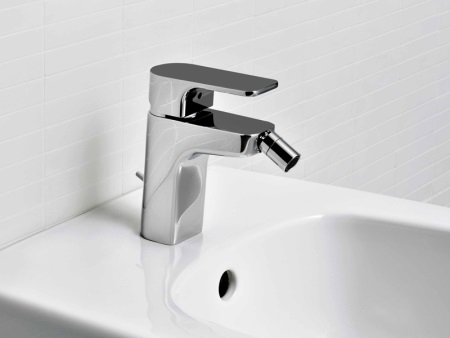
Are the savings realistic?
Many people doubt that an aerator really has the effect of saving on fluid consumption.
Salespeople at plumbing supply stores claim that mixing water with air produces results. If you open the faucet completely without an aerator, about 15 liters of water will flow out of it in a minute. With an aerator the figure is reduced to 6-8 liters without reducing the quality of the head. In practice it looks like this. Reducing the diameter of the hole leads to the saving of water.
Because of this design, the following happens to the liquid:
- Increased water head. The high pressure of the network is higher than the resistance of the aerator. That is, the water comes out in smaller quantities, but with a greater head. Simply turn on the water supply in the same mode with and without the device to feel the difference;
- The aeration increases, that is, the water is saturated with air. Because of this, the volume of flow becomes larger.
All this leads to the fact that we get a good head with less water consumption. The savings are real.
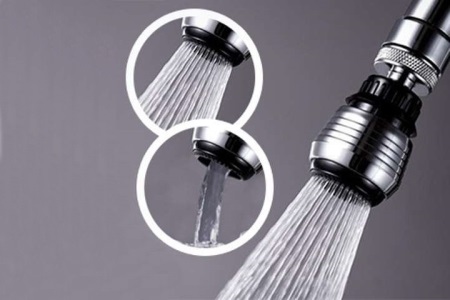
How it works
As a rule, The aerator's design consists of three components - the body, the rubber seal and the filters.
The body is made of plastic, pressed metal or brass. The latter is the most durable, but also the most expensive. Plastic and metal are not bad alternatives, but it is better to choose the brass one.
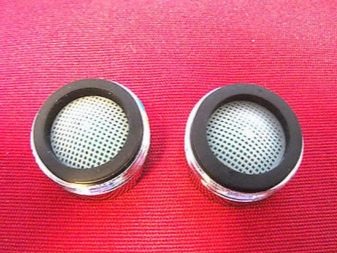

The main function of the device is to limit the flow of liquid. Water passes through several sieves, thereby mixing with air. From this water flow becomes soft, the head - a lot. The admixture of air allows obtaining an equally effective head while reducing the pressure in the water system.
During washing dishes, taking water procedures you will not feel the difference in the volume of water coming from the faucet, but when you dial water into the container you will notice that the process takes longer than it does without an aerator.
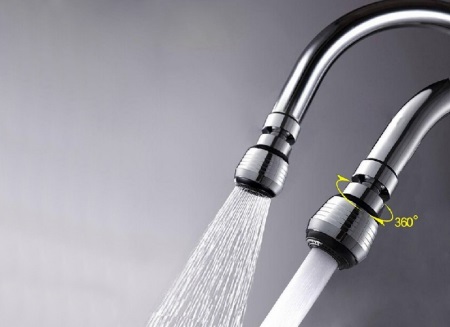
Types
Aerators are distinguished by the type of materials used for the body.
- Pressed aluminum. The most unfortunate choice, which has a number of disadvantages. The body turns out to be brittle, is afraid of any mechanical damage, oxidizes, sticks to the faucet, makes it difficult to dismantle. Only the cheapest faucets are equipped with such aerators.
- Plastic. It is a short-lived option, but it does not stick to the spout, it is easy to dismantle and install in place. At the same time, it is wary of mechanical loads and often breaks.
- Brass. In terms of reliability and durability, they have no equal. Do not rust, can withstand serious loads. Products of stainless steel serve as an alternative. Also a good option, but not very common.
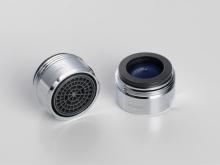
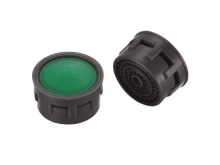
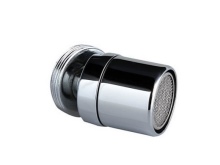
If we take into account the method of installation, then aerators are divided into two types:
- Internal installation. The aerator is equipped with an external thread, thanks to which the element is screwed into the mixer, that is, its spout;
- External. The body has an internal thread, through which it is screwed on the spout. Accordingly, the spout must also have a special thread.
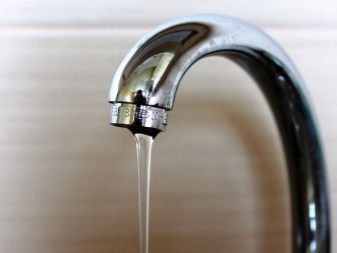
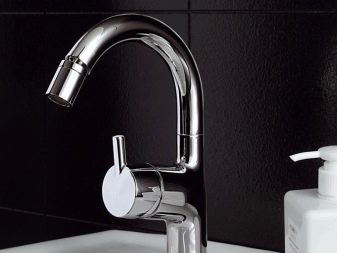
There are different aerators and by additional functions.
- Rotary. They are often called flexible. Made in the form of a small hose, which allows you to move the aerator to one side or the other over the sink.
- Backlit. It's just a decoration, but it does not have any practical function. But it looks spectacular. Let's talk about it in detail.
Backlit.
If you have children, or you are a fan of the original decor, you will love the backlight for the aerator. Inside its body is a microturbine and an electric generator with a temperature sensor. Plus, of course, diodes. The nozzle is capable of working at temperatures up to 60 degrees.
It is connected like a normal aerator. Its main feature - illumination of the jet. And its color can be different, depending on the temperature of the water coming from the tap:
- If the temperature is below 29 degrees Celsius, green diodes turn on;
- If the temperature is between 30 and 38 degrees Celsius, blue diodes are activated;
- Red indicates that the temperature has reached 39 degrees or more.
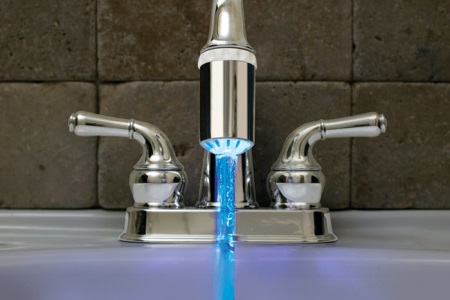
Cleaning
When it becomes necessary to clean the aerator, Follow this sequence of steps:
- Disassemble the device by turning it by hand. If it cannot be removed by hand, use pliers;
- Move strictly clockwise when looking at the faucet from above;
- When the rubber gasket falls out or is removed, check its condition;
- On the side of the outlet of the jet from the body, press with your finger, which will remove the meshes;
- A needle and a jet of water will help clean the meshes of dirt;
- Assemble the cleaned device and put it back in place. Do not tighten too much. Manual effort is sufficient.
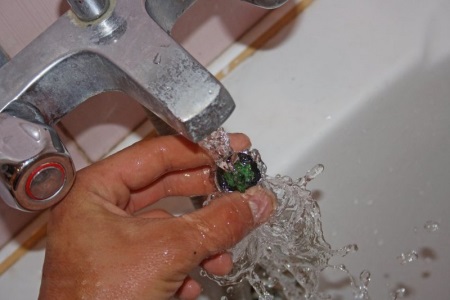
Replacing
Replacing the device is very simple. To do this, you need to dismantle the aerator as specified in the cleaning, send it to the scrap yard, buy a new one and put it back in place. That's it!
Tips for choosing
- Price and quality. Budget aerators are made of plastic, so they will not last long. Metal products are better, but they are prone to corrosion. Brass is the best option. They cost more, but they provide a long and effective service. If the faucet is rarely used, there is no need for an expensive aerator. But in daily use, take only reliable and quality products.
- Threads. Look at the threads of the faucet. Not all aerators are universal, so you can find the right device by matching the threads.
- Additional functions. More and more often we hear about illuminated aerators. We talked about them. Such products have similar functions, plus illuminate the water flow at certain temperatures. It looks great, but it affects the cost of the aerator. In terms of aesthetics, a very interesting solution. Therefore, we do not recommend refusing to buy a diode aerator.
